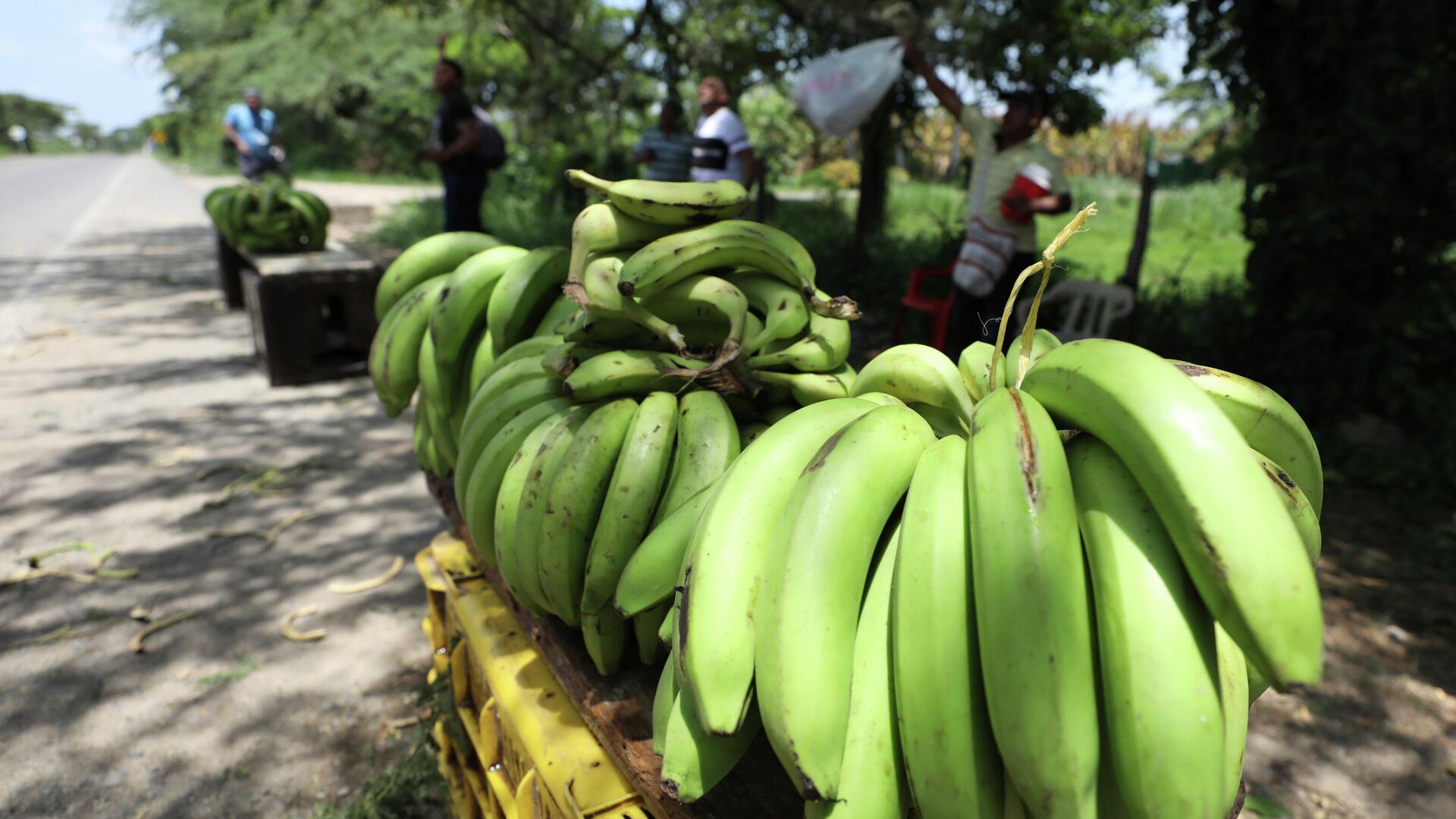https://sputnikglobe.com/20211224/iaea-trying-to-save-banana-crop-in-latin-america-with-nuclear-science-1091782199.html
IAEA Trying to Save Banana Crop in Latin America With Nuclear Science
IAEA Trying to Save Banana Crop in Latin America With Nuclear Science
Sputnik International
The International Atomic Energy Agency (IAEA), in partnership with the UN Food and Agriculture Organization, is combating the banana wilt pandemic in Latin America with the help of nuclear science, the agency said on Friday.
2021-12-24T17:26+0000
2021-12-24T17:26+0000
2022-08-06T13:32+0000
iaea
international atomic energy agency (iaea)
latin america
nuclear
crops
banana
science & tech
https://cdn1.img.sputnikglobe.com/img/07e5/0c/18/1091782423_0:0:3116:1753_1920x0_80_0_0_6ad874a71febe69b50147590a5dddbd0.jpg
"When the Andean community reached out to us, we were aware that the condition is serious and that we should use our nuclear expertise to stop any further spread of the disease," IAEA Director General Rafael Mariano Grossi said, as quoted in a press release.Fusarium wilt, also known as Panama disease, is considered the most lethal disease for bananas in the world. The disease spreads mainly in Latin America and targets the most popular export banana variety - the Cavendish."We use irradiation to modify the plant material to develop disease resistant varieties as well as use the nuclear-derived technique of polymerase chain reaction (PCR) or DNA sequencing to detect the disease and stop its spread," Najat Mokhtar, IAEA deputy director general and head of the nuclear sciences and applications department, added.Bananas are a staple of the food basket in most regions of the world, especially among the poor with over 84% of bananas being produced by smallholder farmers and destined for domestic markets. Bananas are also an integral part of the export of a number of Latin American countries.
Sputnik International
feedback@sputniknews.com
+74956456601
MIA „Rosiya Segodnya“
2021
Sputnik International
feedback@sputniknews.com
+74956456601
MIA „Rosiya Segodnya“
News
en_EN
Sputnik International
feedback@sputniknews.com
+74956456601
MIA „Rosiya Segodnya“
Sputnik International
feedback@sputniknews.com
+74956456601
MIA „Rosiya Segodnya“
banana crop, latin america, the international atomic energy agency (iaea)
banana crop, latin america, the international atomic energy agency (iaea)
IAEA Trying to Save Banana Crop in Latin America With Nuclear Science
17:26 GMT 24.12.2021 (Updated: 13:32 GMT 06.08.2022) MOSCOW (Sputnik) - The International Atomic Energy Agency (IAEA), in partnership with the UN Food and Agriculture Organization, is combating the banana wilt pandemic in Latin America with the help of nuclear science, the agency said on Friday.
"When the Andean community reached out to us, we were aware that the condition is serious and that we should use our nuclear expertise to stop any further spread of the disease," IAEA Director General Rafael Mariano Grossi said, as quoted in a press release.
Fusarium wilt, also known as Panama disease, is considered the most lethal disease for bananas in the world. The disease spreads mainly in Latin America and targets the most popular export banana variety - the Cavendish.
"We use irradiation to modify the plant material to develop disease resistant varieties as well as use the nuclear-derived technique of polymerase chain reaction (PCR) or DNA sequencing to detect the disease and stop its spread," Najat Mokhtar, IAEA deputy director general and head of the nuclear sciences and applications department, added.
Bananas are a staple of the food basket in most regions of the world, especially among the poor with over 84% of bananas being produced by smallholder farmers and destined for domestic markets. Bananas are also an integral part of the export of a number of Latin American countries.



